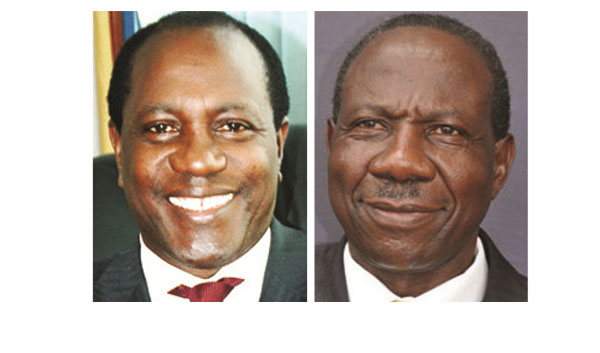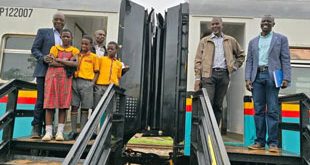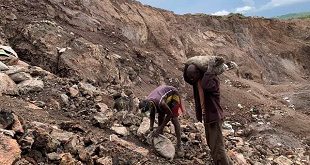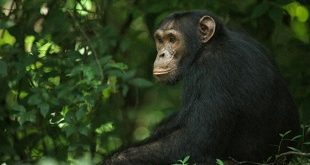
Weaknesses and fake investors
But Don Bwesigye Binyina, the executive director of the African Centre for Mineral Policy (ACEMP) told The Independent that Uganda suffers from policy and monitoring weaknesses in the mineral sector.
“Karamoja represents only 20% of the country,” he said, “We expect the government to have made progress with the 80% of surveyed region.”
He added: “We need to be honest with ourselves and look at the so-called investors who have held these exploration licences for the 80% of the country that has already been covered by the aerial survey. What can they show today?”
He says the only evidence there is shows that although there are more exploration licences than mining licences, when one goes in the field, one finds that the so-called exploration is actually mining activity going on.
“This shows there is policy and monitoring weakness on the side of the government.”
Binyina told The Independent that investors have got used to weaknesses in the sector and it is common practice for company to “explore” for seven years and as the licence is about to expire, it gets around the Directorate and changes names and does “exploration” for another seven years; just to beat the legal requirements.
He said a Mining Policy was completed in 2016 following consultations which lasted almost 24 months but the draft policy has not been presented to the Cabinet. The Mining Bill is nowhere near the list to be considered and passed into law this financial year.
“That has been the story of Uganda’s mining sector and so it is not exploration which is the panacea to Uganda’s mining industry,” Binyina says, “We need a lot of things to be resolved in the sector. Fast tracking Uganda’s policy will go a long way in addressing these challenges in the sector.”
“The earlier the government opens up and clears the policy and works on a new legal regime, the better the fortunes could change,” he said, “That in itself will not provide the silver bullet to the sector; it still comes back to the will of the government to effect these policies.”
A Global Witness report published in June, this year, entitled: “Undermined: How Corruption, Mismanagement and political influence is undermining investment in Uganda’s mining sector and threatening people and environment,” put prominent names in the government at the centre of the mess in Uganda’s mining sector.
The report particularly mentioned President Museveni who it accuses of influencing the awarding of deals to investors in the extractive sector. These investors, the report noted, sometimes turn out to be fake, evade taxes, and abuse human rights and the environment.
In a statement read to the conference by Matia Kasaija, the Minister of Finance, Planning and Economic Development, President Museveni said the Directorate of Geological Survey and Mines will soon get an exploration unit to carry out further exploration and feasibility studies on Uganda’s multi-strategic minerals such as iron ore.
He said the mining policy has also been reviewed to match the investors’ needs and international competitiveness, a number of initiatives to boost the mining sector have also decided to zero-rate import taxes on all mining equipment.
A minerals protection police unit to rein in on artisanal miners and cut down on illegal mining has also been established and will, “enable co-existence between artisanal miners and medium and large scale miners.”
Latest information in mineral sector
- Karamoja has over 300 million tonnes of limestone. Until recently, he said, the previous confirmed limestone deposits were just 30 million tonnes in Hima, Tororo, and Dura.
- Elgon Mineral Resources has brought US$300 million to invest in a gold mining and processing facility which it wants to establish by 2019. This will be the second firm after African Gold Refinery that recently invested $15 million beneficiation facility that can refine gold up to 99.9% purity.
- Tororo Cement Industries Ltd that used to monopolize the cement industry in eastern Uganda has been joined by National Cement Ltd with new plants in Tororo worth US$500 million.
- African Mineral Resources Ltd, an Australian mining company has invested US$5 million and established 3.4 million tonnes of high grade graphite around Orom hills, in the eastern part of Kitgum District. It plans to mine and add value to graphite resources.
- M/S Kweri (U) Ltd in partnership with M/S Berkeley Ltd and M/S Rwenzori rare metals have carried out feasibility studies leading to an estimated reserves of 300 million tonnes of rare earth elements (REEs) in eastern Uganda. These findings have the potential to increase up to 700 million tonnes.
- And although a moratorium slapped by President Museveni on iron ore mining still stands, Katto said, recent studies by various companies have increased.
- Iron ore reserves of over 200 million tonnes from the earlier 50 million tonnes known in Muko have been confirmed. These have a gross value of US$20 billion.
- African Panther plans to invest US$10 million in mining and processing of tin.
- Guangzhou Dong Song Energy Group promised to invest up to $620 million to develop a polymetallic industrial complex at Sukulu in Tororo to produce fertilizers, steel and rare earth elements. Jane Guo, the CEO says “a lot has been ongoing although people cannot see much from outside.”
- Namekhara Mining Company Ltd in eastern Uganda has established more than 50 million tonnes of high grade vermiculite with a gross value of US$12 billion from the original reserves of 5 million tonnes.
 The Independent Uganda: You get the Truth we Pay the Price
The Independent Uganda: You get the Truth we Pay the Price



I suggest that our president, H.E Yoweri kaguta museveni should sponser the best ugandan scientists to study from countries which are more technological, to get more knowledge in mostly gold refinery, weapon making, petroleum refinery, such that we set our own industries in uganda and stop relying on foreign processed and made goods. For example uganda could make the best use of uranium to make its own biological weapons like missiles, bombs and bullets other than purchasing and relying on foreign controlled weapons, yet we can also make our own using the uranium we have.
such ablessed part of uganda filled with lots of minerals
To the independent.co.ug Administrator, exact listed here: Link Text
It’s so hurtful to see our people in the region rich with minerals in poverty. They are not even recognized bt you hear the westerners and centralians claim to be rich yet the wealth is from karamoja